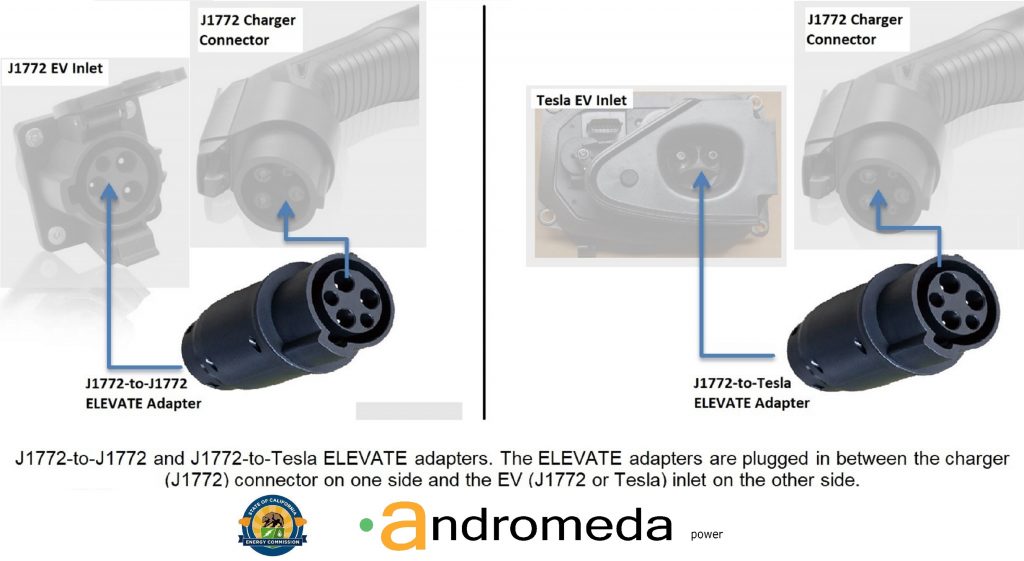

ELEVATE (ELEctric Vehicle AdapTEr) adds
Demand Response to any Electric Vehicle charger
![2944_189581915606_2559120_a2_exfe[1]](http://www.andromedapower.com/wp-content/uploads/2015/05/2944_189581915606_2559120_a2_exfe1.png)
The Andromeda Power project ELEVATE ($1.5M) is awarded from California Energy Commission (CEC).
According to the CEC latest estimates, by 2030 the charging infrastructure to serve 5M EVs will be installed mainly in single family homes (about 4M Level 1 and Level 2 chargers). This substantial additional electrical load (40 GW assuming 10kW load per charger) could be disruptive to the grid if the chargers are not equipped with “Demand Response” (DR) capability.
EVs are charged at power demand comparable to that of major household appliances. Flexible demand appliance standards will promote DR technologies to schedule, shift, and curtail appliance operations to facilitate grid reliability, benefit consumers, and reduce greenhouse gas emissions associated with electricity generation.
Currently, there are two basic options with charging infrastructure. The EV charger can be connected to a local or to a central backend Energy Management System (EMS) (a networked or “smart” charger). A non-networked charger (a “dumb” charger) cannot participate in DR Programs. Smart chargers are capable of DR and are expensive, while those without this capability can be purchased in stores or online at low cost (their price is one
fifth that of a smart charger) because they are manufactured in larger quantities for the wider global market.
The ELEVATE adapter converts a cheap non-networked charger into a smart (networked) charger.
ELEVATE project will miniaturize an existing adapter design for mass production. Thus, solving the scientific-technological barrier for the grid integration of non-networked chargers already mass produced, deployed, and available on the market.
AndromedaPower_PressRelease_Sep_14_2021_ELEVATE_v2
